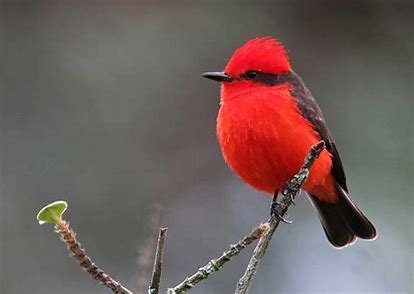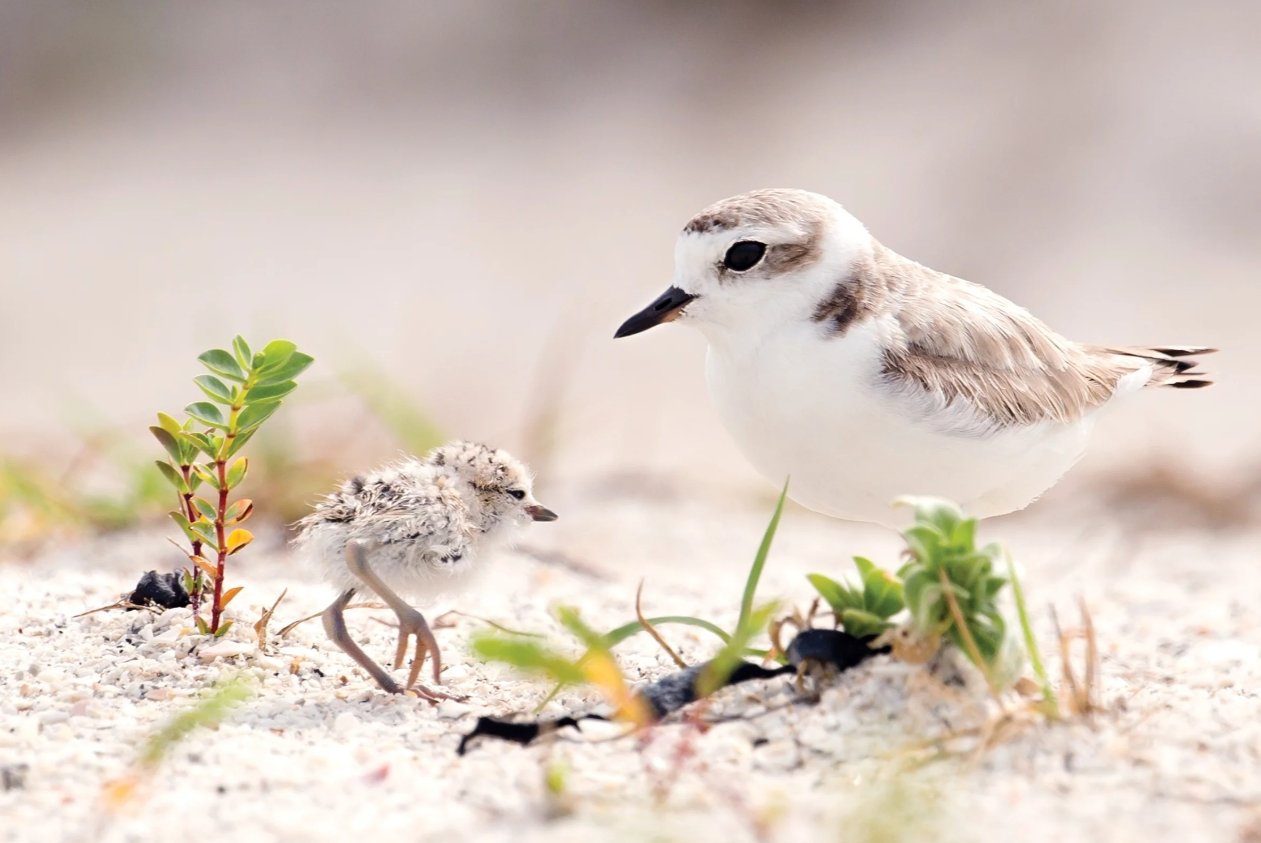Species of the Month
Hooded Oriole
(Icterus cucullatus)
Many residents of Punta Banda are delighted when the Hooded Orioles with their striking plumage arrive every spring to nest. Their arrival is often heralded by a black and brilliant yellow-orange flash across the sky when a male Hooded Oriole dashes through a backyard. A pale olive yellow female Hooded Oriole is often nearby. There are six subspecies of Hooded Oriole, and the subspecies that nests at Punta Banda is Icterus cucullatus nelsoni. This subspecies is noticeably more yellow than the others.
Northern Harrier
(Circus hudsonius)
The Northern Harrier, also known as the "Marsh Hawk," is a bird of prey that can be seen around the Punta Banda estuary. They are slim, long-winged birds with a distinctive white patch on their rump, which makes them easy to identify even from a distance. Males and females look quite different: males, often called "Gray Ghosts," are bluish-gray with white underparts. Females and juveniles are are brown with streaked undersides, making them blend well with their surroundings, but they also have the distinctive white rump (at the upper base of the tail).
Coast Horned Lizard
(Phrynosoma coronatum)
Horny Toad
"Horny toad" is a common nickname for horned lizards, which are not actually toads but reptiles. These lizards belong to the genus Phrynosoma and are known for their distinctive, toad-like appearance with a broad, flattened body and spiny protrusions on their heads and bodies. The term "horny" refers to these spines or "horns."
Round Stingray
(Urobatis halleri)
Among the many marine inhabitants around the Punta Banda peninsula, the Round Stingray (Urobatis halleri) is one beachgoers should be familiar with. Despite their generally docile nature, Round Stingrays have a venomous spine on their tail, which they use for defense.
California Ebony Tarantula
(Aphonepelma eutylenum)
While they may look intimidating, particularly to those with arachnophobia, California ebony tarantulas aren’t dangerous to humans. These tarantulas are known for their docile nature and rarely bite unless seriously provoked. If a bite does occur, it can be painful due to their large fangs, but while they do have venom, it is mild and primarily used to subdue their typical insect prey.
California Sagebrush
(Artemesia California)
One of the most dominant plant species defining the coastal sage scrub natural community is California sagebrush, which gives the hills that distinctive sage-like fragrance, even though it is not a true sage (true sages are in the genus Salvia).
The Ridgway’s Rail
(Rallus obsoletus levipes)
The Ridgway’s Rail is an endangered bird species found only along the Pacific coast of North America from the San Francisco Bay Area to southern Baja and parts of the Gulf of California – and it inhabits the Punta Banda estuary.
California Brown Pelican
(Pelicanus occidentalis californianus)
Everyone loves watching the squadrons of California brown pelicans gliding along the Punta Banda coast and spectacularly plunge diving for fish. But few people know that this is one of only two species of pelicans in the world that dive for fish rather than catching fish while swimming.
Orange-Throated Whiptail
(Aspidoscelis hyperthyrus)
The Punta Banda peninsula has a wealth of native reptile species, including the orange-throated whiptail (Aspidoscelis hyperthyrus). These long, slender lizards can be quite colorful: the juvenile has cobalt blue legs and tails, and the adult male has an orange belly, undertail, and throat, especially bright during breeding. Adult females may also have some orange along the lining of the lower jaw.
Evergreen Current
(Ribes viburnifolium)
The evergreen current, also known as Santa Catalina Island current of island gooseberry, only grows in coastal areas from San Diego County southward to El Rosario in central Baja, and on several islands including Catalina, Todos Santos, and Cedros islands.
Cardinal larkspur
(Delphinium Cardinale)
If you’re hiking the hills on the Punta Banda peninsula in June, you may come across a brilliant red larkspur growing on the chaparral lined slopes. This is cardinal larkspur (Delphinium cardinalis), a native to coastal California and Baja. This larkspur grows up to about 6 feet in height and has scarlet sepals and petals with bright yellow on the top petals.
Vermillion Flycatcher
(Pyrocephalus obscurus)
One of our most striking birds on the Punta Banda peninsula is the Vermillion Flycatcher. The males are fire-headed beauties, brilliantly red with dark brown wings and tail. Females are more subtly colored, with gray-brown plumage and a warm salmon-red blush on the underparts.
Sand Verbena
(Abronia maritima)
This week’s species, Sand verbena (Abronia maritima) is a gorgeous perennially flowering beach plant. Most beach visitors in heavily traveled areas aren’t fortunate enough to be able to enjoy this profusive purple-bloomed perennial, as it’s sensitive to beach traffic. This beach-adapted perennial is a native to the coastlines of southern California and northern Baja California.
Snowy Plover
(Anarhynchus nivosus)
The snowy plover is one of the most charming inhabitants of the Punta Banda peninsula. These plump little round-headed shorebirds captivate those lucky enough to see them flitting about our local beaches on their tiny legs, capturing insects and marine invertebrates.
California Least Tern
(Sternula antillarum browni)
You may have noticed the terns hovering over our oceans and estuaries and gracefully dipping and diving. At first glance they look like seagulls, but they’re more streamlined and agile with pointed wings and often with black windswept caps. The smallest of these terns, the California least tern, is an endangered species that nests on the sand at the end of the spit near the estuary.
The Western Beach Tiger Beetle
(Cicindela latesignata)
If you’re walking down the beach on the spit, in areas not heavily trafficked, you may see tiny creatures that you mistake for flies, flying out from in front of you and then landing a short distance away. If you’re able look closely, as they often run fast or fly short distances away, you may find that they’re actually pretty trippy looking beetles with interesting patterns on their backs. This is a rare species called the Western Beach Tiger Beetle, that only occurs on relatively undisturbed beaches in Southern California and Baja.
Punta Banda Live-Forever
(Dudleya campanulata)
Did you know there are plant species that occur on the Punta Banda peninsula and nowhere else in the world? The Punta Banda live forever is a remarkable perennial that graces the rocky bluffs of the Punta Banda peninsula.
Blue Whale
(Balaenoptera musculus)
Blue whales, the largest animals to have ever lived on Earth, can sometimes be seen off the coast of Punta Banda, quite close to shore. Learn more about these magnificant creatures.


















